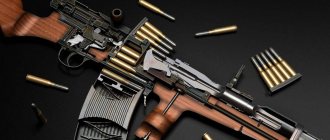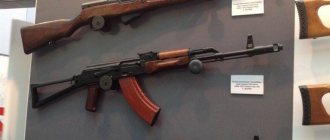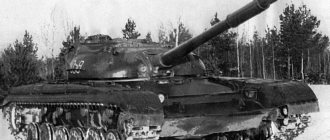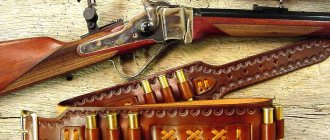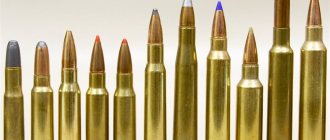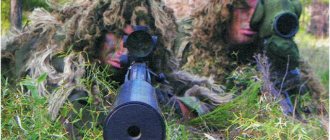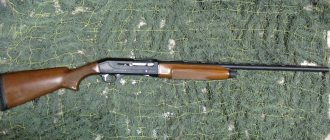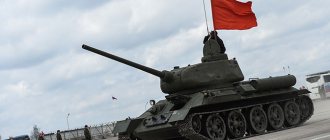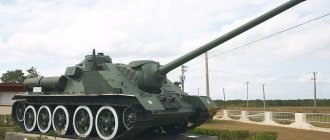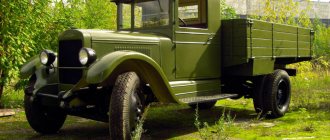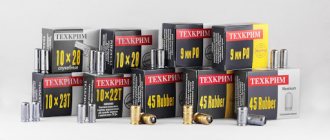Casings shot from an MG-34 machine gun - the muzzle is jammed into an oval:
7.92x57 Mauser cartridges fired from Mauser K98 The cartridge case after the shot remains without traces of significant deformations. The characteristic trace of the ejector is a wide trapezoid with “teeth”; it is difficult to read. The mark of the reflector is a corner dent, visible only on perfectly preserved cartridge cases. The primer tip is round, shallow, off-center and of small diameter.
Traces on Mauser cartridges shot from a carbine
Inspection of the sleeve. Subtleties of quality inspection
Before actually inspecting the cartridge case, it is necessary to locate and record its location.
When searching for spent cartridges, it is recommended to do the following:
a) determine the probable location of the shooter (by the nature of the main and additional traces of shots, the results of sighting, the marks of the shooter’s shoes);
b) to determine the places where cartridges may be located, you should:
- for the detected weapon, take into account its reloading system (with ejection of the cartridge case by the bolt, manual removal), the direction and approximate distance of ejection of the cartridge case;
- from the fired shells (revolver, pistol, rifle, rifle, shot or buckshot bullets) to get an idea of the type of weapon used and its reloading system;
c) keep in mind that the number of cartridges sought must be no less than the number of input gunshot injuries and equal to the number of shots fired;
d) divide search areas for shell casings in open areas into squares and inspect them with a metal detector (mine detector), dig up and sift heaps of garbage and bulk substances, melt snow, drain small puddles, mow grass;
e) in the room, along with the floor, examine other places where shell casings could possibly enter, in particular, open furniture drawers, dishes, hanging clothes, bedding, shoes, etc.).
If the search area is large, there is debris, loose substances, or the room is cluttered with things, it is advisable to use a search dog to search for spent cartridges;
f) measure the distance from the detected cartridge case to the two nearest permanent landmarks;
g) if there are several sleeves, each should be numbered and the distance between them should be measured;
h) take a snapshot of the location where the cartridge case was found and a large-scale snapshot of it;
i) data on the cartridge case and the place of its discovery, measured distances should be reflected in the protocol and on the diagram of the Incident site.
Inspection of the sleeve
Before inspection, the cartridge case must be placed on a sheet of clean white paper. It is advisable to inspect the sleeve while wearing rubber gloves, grasping the edges of the barrel and flange with two fingers (to avoid damaging possible hand marks). If necessary, number the cartridges and place a piece of paper with the number in each of them.
7.92 x 57 Mauser cartridges shot from a Czech ZB machine gun have an oval mark from the firing pin:
The firing pin of the British Bran machine gun (face copy of the Czech ZB28/30) chambered for .303 British has a similar shape:
Drummers of machine guns with a rectangular firing pin:
Bites on the bottom of the cartridge case from the MG-81 machine gun (7.92 mm German aircraft machine gun):
Non-ejection of the cartridge case in the MG-34 machine gun (clutching of the cartridge case that did not leave the bolt box with the bolt during combat, i.e. when moving “forward”):
Marks on the case 7.62x54R Mosin rifle 1891/30, Mosin carbine 38, Mosin carbine 44
The cartridge case after the shot shows no signs of significant deformation. A characteristic mark of the ejector is a jammed welt at 13-17 o'clock, stripes on the chamfer of the bottom. The reflector mark is a rectangular mark at 20 o'clock, 1x1 mm, readable only on perfectly preserved cartridge cases. The primer tip is round, shallow, off-center and of small diameter. Traces on the cartridge case of 7.62x54R cartridges fired from the SVT-40
A cartridge case with a slight jam at the barrel and a trace of an impact on the bolt frame on the body. If the gas outlet is incorrectly adjusted, the chamber is contaminated, or bimetallic sleeves are used, numerous cracks and breaks are observed. There are traces of Revelli grooves on the body and muzzle of the case. The characteristic mark of the ejector is a welt jam at 13-17 o'clock, a line on the bottom. The reflector mark is a semicircular mark at 20 o'clock, 1x1 mm, quite deep. The capsule tip is round, deep, off-center and of small diameter. There is asymmetry around the circumference.
Classification of cartridges
The ammunition used in modern small arms can be divided into several conventional classes, mainly by caliber. Considering cartridges for military weapons, several conditional classes can be derived:
- Ammunition for pistols has a caliber from 4.5 to 12 mm;
- Ammunition for revolvers has a caliber from 5 to 12 mm;
- Ammunition for assault rifles has a caliber from 5.45 to 7.62 mm;
- Ammunition for sniper rifles has a caliber from 7.62 to 9 mm;
- The special “anti-material” ammunition has a caliber from 12.7 to 20 mm.
The cartridge consists of the following parts - a projectile (bullet), a propellant charge (gunpowder), a metal sleeve and a gunpowder igniter (primer). A schematic drawing of the bullet and cartridge case is attached below.
Cartridge cases 7.62*25:
Shot marks on military and commercial cartridge cases differ, most likely due to the greater pressure when firing military cartridges. Military cartridge cases have a more pronounced deflector imprint, likely due to the higher bolt speed.
The fact that the cartridge case was fired in a TT pistol is indicated by the specific mark of the pear-shaped firing pin, with a “pull”:
Cases fired in PPSh and PPS are characterized by a large, almost entire primer, firing pin mark
Marks on cartridges from P-08 Ejector hook - located at the top, concave arc shape, width - 3.6 - 4.2 mm. The reflector protrusion is located at the bottom right, the shape of the working surface is rectangular, 1.1 -1.3 mm wide. The angle between the reflector protrusion and the ejector hook is 230°. The firing pin is a hemispherical tip, with a diameter of 1.3 - 1.5 mm. The front section of the shutter has traces of concentric processing.
There is a version that in some chambers of Parabellum pistols there is a ledge that leaves a characteristic overcompression
Design of small arms cartridge casings
A modern handgun cartridge consists of the following main elements: a cartridge case, an igniter primer, a propellant charge and a propellant element.
The main part of the cartridge is the sleeve, i.e. a part that serves to connect into one whole all the elements of a unitary cartridge (bullet, powder charge and primer), fasten all its other parts and seal the powder gases when fired. It isolates the powder charge and primer composition from the external environment. Thus, the metal sleeve of a unitary cartridge facilitates the loading process, creates conditions for its automation and a sharp increase in the rate of fire, and also ensures long-term storage of cartridges in warehouses and in other conditions, allowing for large stocks of them.
A powder charge is placed in the case body, the bullet is mounted in the muzzle, and the igniter primer is inserted into the primer socket, which usually has an anvil and one or two seed holes through which a beam of flame from the primer is transmitted to the powder charge. In the bottom part, the cartridge case has a flange (rim) or groove, through which it is removed from the chamber by the ejector after the shot.
The sleeve consists of the following main elements: the cut of the sleeve - the end on the side of the open end of the sleeve; case muzzle - the front part of the case, which goes into the slope or body, ensuring good retention of the bullet in all cases of handling and use of the cartridge; sleeve slope - the transitional conical part of the sleeve between the barrel and the body (important for sleeves with an emphasis on the slope); liner body - the conical or cylindrical part of the liner from the bottom to the slope or cut. The case body serves to place the charge. The wall thickness of the case body gradually increases towards the bottom for both manufacturing and case strength reasons. The wall thickness of, for example, a domestic rifle case at the bottom reaches 0.89 mm; the bottom of the sleeve - the rear transverse wall of the sleeve. The thickness of the bottom of the sleeve should provide the possibility of reliable fastening of the primer and guarantee the strength of the sleeve in weak areas of the bottom; bottom part of the case - part of the case, including the groove, flange, bottom, partition, ignition holes, primer seat and anvil; sleeve grooves - an annular groove in the bottom of the sleeve intended to form a flange; flange (edge) of the cartridge case - a belt in the bottom part of the cartridge case, intended for removing the cartridge case or cartridge from the chamber; case partitions - walls at the bottom of the case that separate the primer socket from the inner cavity of the case. The baffle usually has one or two seed holes through which the beam of fire from the primer is transmitted to the charge. The partition is stamped together with the anvil; primer socket of the sleeve - a recess on the outside of the bottom of the sleeve in which the igniter primer is attached; ignition hole - a hole in the case partition for transmitting a beam of fire from the igniter primer to the propellant charge; case anvil - a protrusion in the center of the primer socket of the case, on which the impact composition of the igniter capsule is broken; cartridge case charging chamber - the internal cavity in the case between the tail of the bullet and the bottom of the case, which serves to place the propellant charge.
The shape and dimensions of the cartridge case have a significant impact on the design and functioning of the firearm.
Depending on the geometric shape, sleeves are divided into cylindrical and conical (bottle). Cylindrical cartridges are used in low-power cartridges (pistol cartridges) with a relatively low pressure of powder gases, and bottle cartridges are used in more powerful cartridges with significant pressure. Cylindrical sleeves can have different degrees of taper, and bottle sleeves can have different bottle ratios. Bottle sleeves differ from cylindrical ones by the presence of a slope, which is a transitional part from the barrel to the body. Cylindrical sleeves have the same transverse dimensions along the entire length of the body. The bottle capacity of the liner is characterized by the bottle capacity coefficient, which determines the ratio of longitudinal and transverse dimensions. with an increase in the bottle coefficient, the mass of the cartridge case and cartridge increases and the length of the cartridge decreases. With a large bottle capacity, the transverse dimensions of the breech, bolt and receiver increase, but the length of the sleeve and the stroke of the moving parts decrease, so for each weapon design there is the most favorable value of the bottle factor.
The shape of the cartridge case determines the method of its fixation in the chamber of the weapon before firing and the accuracy of its manufacture, the design of the feed mechanism and the reliability of the operation of the weapon itself.
Depending on the design of the flange (edge), the sleeves can be with a protruding flange (edge) and with a non-protruding flange (edge). If the cartridge case has a protruding or partially protruding flange (rim), then the cartridge is fixed by the rim resting on the breech section of the barrel. If the sleeve has a non-protruding flange (rim), then the cartridge is fixed either by stopping the sleeve slope into the chamber slope (in cartridges with bottle sleeves), or by stopping the cut (front end) of the cartridge case into the chamber ledge (cartridges with cylindrical sleeves). If there is a cylindrical protrusion on the case body, the cartridge is fixed by the stop of this protrusion into the ledge of the chamber.
There are the following methods for fixing the sleeve:
1. Sleeves resting on the front cut. This fixation method is used in 9 mm PM pistol cartridges with a cylindrical sleeve without a protruding flange (rim). The advantages of this type of cartridge case are: ease of manufacture, a simple barrel stump design is possible. The disadvantage is the small area of fixation of cartridges in the chamber.
2. Sleeves with the protruding flange (rim) resting on the breech end of the barrel. For example: a cartridge case for a 7.62 mm rifle cartridge mod. 1908; 7.62mm sleeve for the Nagan revolver cartridge, etc. Advantages of this type: the cartridge is more firmly fixed in the chamber; Great accuracy in manufacturing the sleeve along its length is not required, since the gap between the front plane of the bolt and the bottom of the sleeve is affected only by the manufacturing tolerance for the thickness of the rim. Disadvantages of this type of cartridge case: feeding of the cartridge is difficult, since the rim can cling to the next cartridge and cause delays; direct belt feeding of a cartridge with a flange is difficult to implement; box-type stores receive an increased steepness, which complicates their production, and measures must be taken to eliminate the adhesion of cartridges by the edges when feeding; the diameter of the sleeve along the rim increases, which leads to an increase in the transverse dimensions of the bolt and receiver; The shape of the barrel hem becomes more complicated (cutouts for the ejector are required), which complicates the processing of the barrel and its assembly with the receiver.
3. Sleeves with the ramp resting on the chamber ramp. Similar cartridges are used in domestic 7.62 mm pistol cartridges mod. 1930; in 5.45 mm low-pulse automatic cartridges 7N6 and 7.62 mm automatic cartridges mod. 1943; in 12.7 mm and 14.5 mm large-caliber cartridges for DShKM/NSV and KPV/KPVT machine guns (respectively). in the TT pistol arr. 1933, the limitation may not be the stop of the sleeve slope into the chamber slope; depending on the actual tolerances, the restriction may occur by the stop of the muzzle cut into the chamber shoulder. The advantages of this type of sleeves: more favorable feeding conditions; a smaller transverse size of the gate is possible; a simpler design of the barrel hemp is possible. The disadvantage of this type of cartridge case is that it requires great precision in maintaining the dimensions of both the chamber and the cartridge case (especially in terms of the distance from the bottom of the cartridge case to the beginning of the slope and the diameter at the beginning of the slope). This is explained by the fact that the position of the cartridge in the chamber is limited by the stop of the cartridge case slope in the chamber slope, and the position of the outer surface of the bottom of the cartridge case relative to the breech cut of the barrel depends on the total tolerance for both the manufacture of elements of the case body and the production of chamber elements. This is the only drawback of this type of sleeve. In general, this type of sleeve is the most modern.
4. Cases with the sleeve protrusion resting on the chamber ledge. The creation of this type of case is the result of an attempt to obtain a case free from the disadvantages of the previous two types. But at the same time, the sleeve received new disadvantages, for example, increased mass (due to the greater thickness of the bottom of the sleeve), and the presence of a special protrusion that makes direct feeding difficult. When the cartridges are placed in the magazine, the protrusions of the cartridge cases interlock, causing the upper cartridge to jam during chambering. Therefore, this type of cartridge case has not found application for small arms of conventional caliber and is used only in large-caliber systems.
5. Mixed type of sleeves. In these sleeves, the fixation of the cartridge in the chamber can be either a stop of the sleeve slope into the chamber slope, or a stop of the sleeve rim, depending on the actual dimensions of the sleeve (taking into account tolerances).
Casings without a groove with a protruding flange are used mainly in single-shot or combined weapons, in revolvers. Sometimes they are also used in magazine weapons. Cases with a groove and a non-protruding flange, on the contrary, are usually used in magazine and self-loading weapons, in particular in pistols. Cases with a groove and a partially protruding flange can be used in both groups of weapons. This is explained by the fact that in the first group of weapons the cartridge case cannot advance further than its normal position due to the fact that it is delayed by the flange, and in the second - due to the fact that its slope rests against the chamber slope. the most powerful weapons use cartridges with a bottom stop in the form of an annular thickening on the body, which reliably fixes the position of the cartridge in the chamber.
If the lip protrudes completely beyond the side surface of the body, then such sleeves are called sleeves with a protruding flange (rim). This sleeve design, developed back in the 1880s for rifles with mechanical reloading, has the most durable bottom, and also allows for relatively low manufacturing accuracy of the locking assembly parts. at the same time, the presence of a protruding flange (edge) leads to an increase in the transverse dimensions of the bolt and receiver, and to a certain deterioration in the conditions for feeding cartridges in automatic weapons. The design of magazines is becoming more complex; special design solutions are required to protect the cartridges from being caught by the edges during the process of feeding cartridges from the magazine. All this greatly complicates the design of weapons and reduces one of the main properties of automatic weapons - the reliability of their operation. Despite the fact that for modern automatic weapons this type of cartridge is considered obsolete, thanks to the intelligence, ingenuity and efforts of domestic designers, some of the best examples of small arms (each in its class) have been created for them - the Dragunov self-loading sniper rifle (SVD) and a single machine gun Kalashnikov (PK/PKM).
Sleeves with an annular groove, in which part of the rim protrudes beyond the side surface of the body, have also received a certain development. Such sleeves are called sleeves with a partially protruding rim (semi-flange). These sleeves are substantially free from the disadvantages inherent in sleeves with a protruding rim. To remove the cartridge case from the chamber, the entire edge formed by the annular groove is used. In such a sleeve design, it is relatively easy to avoid the cartridges from sticking in the magazine, for which a chamfer is provided on the edge of the sleeve on the bottom side.
If the edge is formed by an annular groove and does not protrude beyond the side surface of the body, then such a sleeve is called a sleeve with a non-protruding edge (wafer). These cartridges, completely freed from the disadvantages of cartridges with a protruding rim, are most widely used in automatic weapons, since they provide more favorable conditions for reliable operation of the weapon. However, unlike cartridges with a protruding rim, cartridges with a non-protruding rim have a bottom weakened by an annular groove, which is deformed at high pressures of powder gases in the barrel, which negatively affects the strength and reliability of cartridge extraction. This drawback limits the possibility of using cartridges with a non-protruding rim for firing at high pressures of powder gases and is more characteristic of cartridges made of brass.
Depending on the manufacturing method, the sleeves are either seamless or composite. The latter come with a seamless or rolled body. Composite casings with a rolled body were used in small arms, along with solid-drawn ones. The rolled body could increase in diameter when fired by a greater amount in comparison with a solid-drawn one, which made it possible to process the chamber and sleeve with low accuracy. With the improvement of the technology of manufacturing weapons and cartridges, this advantage of rolled cartridges lost its significance. Considering also that the rolled cartridge was not hermetically sealed, unitary cartridges with a seamless metal sleeve subsequently received predominant use.
Composite cartridge cases with a stamped bottom and a body rolled from a gusset of sheet material were periodically revived in relation to artillery pieces. This was usually observed in wartime, when a large amount of powerful pressing equipment was required to produce a large number of solid-drawn cartridges, and the cartridges were stored for a short time. Composite cartridge cases are not used for small arms and small-caliber automatic guns, although their use as a means of ensuring normal operation of weapons at high pressures of powder gases is not excluded.
For small arms, cartridge cases are made of metal: case brass; low-carbon steel clad with tombac (bimetal); varnished steel; red copper, etc., which have sufficient ductility, elasticity and corrosion resistance, and are also well processed.
The difficult service conditions of the cartridge case when fired in small arms, especially automatic ones, place special demands on both the design and material of the cartridge case. It is required that case materials have a number of properties, which include: - high plastic properties (sufficient strength), necessary both for production reasons (deep cold pressure drawing) and to ensure good performance when fired; — high elasticity necessary for easy extraction of the cartridge case from the chamber after firing; — invariability of mechanical properties over time and resistance to spontaneous cracking; — high anti-corrosion resistance, resistance to cracking and non-interaction with charge; chemical neutrality to powder charge and resistance to high temperature; — simplicity and convenience of mechanical and heat treatment in the manufacture of sleeves; - low cost and non-scarcity.
Brass of the L68 and L70 grades most fully possesses these properties, but its use is limited by high cost and scarcity, as well as a tendency to spontaneous cracking, which complicates long-term storage of cartridges, which forced the search for new materials for cartridges. Since the First World War, brass has been increasingly replaced by steel as a cheaper material. During the transition to cartridge loading, paper cartridges were used in small arms. currently they are used only in hunting weapons and in some flare gun and mortar systems.
Currently, for the manufacture of cartridge cases for small arms, they are trying to use low-carbon steel, which is a cheaper and more abundant material that is almost not subject to spontaneous cracking. But compared to brass, it has worse ductility and anti-corrosion resistance, which forces steel sleeves to be clad (coated) with tombac, and is also less susceptible to cold pressure treatment.
As a substitute for tombak, cold-rolled low-carbon steel grade 18YuA without plating with tombak is sometimes used for the manufacture of both cartridge cases and bullet casings. The resulting finished cartridge case is phosphated and coated with varnish or a metal protective coating, usually consisting of copper, applied by contact, which improves the service conditions of the cartridge case when fired.
However, the latest achievements of modern science and technology made it possible to create at the end of the twentieth century a completely new design of caseless cartridges (in which the powder charge is formed in the form of a checker). Their use is economically justified and expedient, since it provides significant advantages over conventional samples.
PROPELLING CHARGES
Powder charges are used as propellant charges in cartridges. The powder charge is intended to give the bullet the required flight speed when it burns and to ensure the operation of the automation. The mass of the powder charge is selected in such a way as to obtain the required initial velocity of the bullet while maintaining the average maximum pressure of the powder gases within specified limits. In domestic cartridges, the powder charge has the following mass: for a 9-mm pistol cartridge - 0.23 g; for a 5.45 mm automatic cartridge - 1.44 g; for a 7.62 mm automatic cartridge - 1.6 g; for a 7.62 mm rifle-machine gun - 3.25 g; for a 12.7 mm large-caliber cartridge - 17 g; for a 14.5 mm large-caliber cartridge - 31 g.
The shape of the grains of the powder charge in small arms cartridges is plate-like, tubular with one channel and granular with seven channels. With short weapon barrels, gunpowder with smaller grain sizes is used to ensure complete combustion of the charge while the bullet moves along the barrel. The greater the power of the cartridge, the larger the grains and the more progressive their shape.
FIRE CAPSULES
Automatic small arms use both rimfire (side) ignition cartridges (in which the primer composition is pressed into the edges of the case bottom) - these cartridges are mainly used in sporting and hunting weapons - and center ignition (in which the primer composition is located in the center of the case bottom ) - in ammunition for military weapons.
An igniter capsule is a device designed to ignite a powder charge or a special composition (incendiary, detonating, etc.).
The overwhelming majority of cartridges for automatic small arms are center-fire cartridges. They have a primer socket in the case for the igniter primer, which communicates with the case chamber through seed holes. At the bottom of the capsule socket there is a protruding part - an anvil, usually of a hemispherical shape, on which the striking composition is broken when the striker hits the capsule. According to the method of initiation of the primer composition, cartridges can be divided into three groups: impact, electric and puncture. Moreover, electric primers are used extremely rarely in hand-held firearms. They have found wide application in aviation weapons, making it possible to significantly reduce the firing time (by two or more times).
Depending on the device, impact igniters come in two types: without their own anvil and with their own anvil. Among them, the most widely used are igniter primers of the first type, used in all domestic cartridges. An igniter capsule without its own anvil consists of a brass or copper cap, at the bottom of which an impact compound is pressed, which is very sensitive to impact. To protect the shock composition from external influences, it is covered with a foil or parchment circle. The inner surface of the cap is varnished in order to better secure the impact composition in the cap.
For reliable operation of the capsule, its fastening in the socket must be strong enough and ensure a strictly defined position of the impact composition relative to the anvil.
The properties of impact compounds largely determine the performance of igniter primers. The most common composition is a mechanical mixture of mercury fulminate, potassium chlorate and stibnite.
Igniter capsules must meet the following requirements: fail-safe operation from striker strikes; have good flammability; ensure uniformity of action; be safe to handle and stable during storage (do not change properties).
Sergey Monetchikov Photo by Vladimir Nikolaychuk and from the author’s archive
Import substitution: testing domestic cartridges for .308 reload
The idea arose to try to assemble the most stable cartridge using entirely domestic components for shooting training for a number of sniping exercises (standard, unstable) at distances up to 300m. In principle, I would be satisfied with an accuracy of 1moa for the stated purposes. Domestic gunpowder and primers worked well, but there were still two elements left in the equation—cases and bullets. I decided to start with the cartridges.
Recently, the ORЁLEXPO 2022 exhibition was held in Moscow. I was not able to attend in person, as I was on a business trip. However, through a friend I received an interesting souvenir from there - several dozen brand new brass refinery cartridges in 308 boxer caliber, intended for reloading. I decided to check how successful they are. As a standard for comparison, we will use Lapua sleeves.
The first inspection showed that many cartridges had jammed muzzles. Most likely, this is a consequence of insufficiently careful packaging and subsequent transportation by Russian Post.
A little graphite lubricant, an expanding mandrel from a sharpener, and we have a perfectly smooth muzzle.
After this procedure I moved on to pruning. I measured the lengths of the sleeves, they were in the range of 2.008-2.011 inches (51.00-51.07mm). I cut it at 2.005 and moved on to measuring the thickness of the barrel.
It was interesting to compare the consistency of the wall thickness of the Refinery liners with the Lapua liners. Fortunately, I just had 100 unfired Lapua cartridges in 308 in reserve.
The measurement took place as follows. The minimum and maximum values of the barrel thickness were sought. The results were entered into a table. Above you see measurements from the refinery (in red), below - Lapua (in blue).
The scale of the gafiks is the same. Already at this stage, it is clearly visible that the wall consistency of Lapua is better. But how much? To understand this, the difference between the maximum and minimum thickness was calculated for each sleeve, and then the average was calculated.
We see that the average difference in wall thickness for the refinery was 0.00092 inches (0.023mm), and 0.00068 inches (0.017mm) for Lapua. There is a difference, but in my opinion, the refinery liners showed an excellent result! In fact, boxer brass appeared in refinery cartridges quite a long time ago. I wondered if these were the same quality cartridges, or if some separate project was made for the reload. I still had one-shot cartridges from the Refinery Extra 12g, and I decided to measure the wall thickness of this ammunition and compare it with new cartridges. The results are below.
Here we see a minimal difference; taking into account the measurement error, we can say that these are cartridges of the same workmanship. The only point is that even before firing, refinery cartridges in brass cases often have various damage to the bottom, apparently related to the peculiarities of the loading and transport lines. New sleeves have much less such damage. Burrs on the bottom affect the accuracy of all reload work, starting from the work of the full-size matrix, and ending with trimming and seating the bullet. Therefore, I concluded for myself that single-arrows can be used, but you first need to level the bottom.
After analyzing the manufacturing accuracy, I moved on to equipping the cartridges. The ignition holes were passed with a KM cutter; it fit tightly, but practically did not remove the metal. Again, very similar to Lapua.
Next I moved on to encapsulation. The cartridges were pleased with the tight fit of the primer, almost flush with the bottom.
By eye, I came up with a recipe for the Scenar 167, slightly modifying the cartridge that I once flew with Lapua cartridges. I moved the bullet forward, taking into account the displacement of the rifling with the shot since the creation of the recipe, and weakened the powder charge so as not to overload the case during molding for the chamber.
Test firing was carried out at Test Site 1. Already at the stage of speed control, we were pleased with the cartridges. 2 series of 5 shots flew at 807ms SD2.0 and 808ms SD1.5, which corresponds well to the stability I received with Lapua cartridges.
I will also note the stable obturation at the reduced weight. This indirectly indicates good ductility of the liner.
For the blowing attachment that I figured out on my knee, it turned out to be a good and fairly stable result. I decided to move forward in checking the consistency of these cartridges. It was worth giving them one more cycle to complete the molding, and then try to assemble ammunition with my recipe for the ELD-M 168, for shooting accuracy.
True, it was not possible to do this immediately after blowing. Things have piled up. The cartridge cases went through another cycle as “technical” cartridges for DTK testing. So the molding was completed, and we could try to shoot for accuracy. I returned to this after the new year. The first unpleasant surprise that awaited me was that during storage, rust stains appeared on the cartridges. How this happened in a dry case is a mystery. Questions arose about what kind of “brass” it is that rusts)))) The Lapua cartridges, which were stored in exactly the same way, did not have any traces of rust.
The picture above shows a Refinery liner (on the left) that has gone through 2 cycles and is covered with rust spots, and a Lapua liner (on the right) that has gone through 20 cycles and has no such marks. The lower quality of brass was indirectly confirmed during induction firing. If lapuas from different batches were fired in 2.4-2.5s, then the cartridges from the refinery required only 2.1s. This is certainly better than steel (about 1c), but at the same time it is not as good as Lapua.
For test shooting, batches of cartridges were collected in different cartridge cases with different overall cartridge lengths (OCL). As you know, the rifling gradually fades, and to maintain the setting, the bullet needs to be pushed out a little. Therefore, I decided to combine checking the quality of the refinery cartridge cases with checking whether it was time to push the bullet out a little. I tuned the rifle about 500 rounds ago.
As a result, I assembled two variants of ODP in each sleeve - 73.90 (old setting) and 74.00 (candidate for new settings).
Before leaving for the shooting range, out of curiosity, I checked whether there was a difference in the level of beats in the collected cartridges. The bullets are from the same batch - so if we see a difference, it will be due to a difference in fit due to the uniformity of the walls of the cartridge cases.
The results were interesting. Cartridges in Lapua cases had a more stable level of beating than those assembled in NPP cases. The average runout differs slightly, but the standard deviation is almost twofold. What can you expect on a target from refinery cartridges? Sudden separation from the group) But practice will show everything!
I shot at an indoor shooting range. In total, 4 series of 5 shots each had to be fired.
You can see the shooting results above. The refinery liners showed exactly the separations that could be expected at the runout measurement stage. In addition, it is clearly visible that it is too early to push the bullet, so the working ODP remains 73.90mm. That's it. The cartridges, which initially looked very promising, fell out on the most important thing for which reloading is worth doing - stability. Of course, stability is affected not only by the constancy of the muzzle wall thickness, which we measured. This is also the constancy of internal volume.
This example clearly shows how important it is to have good, properly prepared cases if you want consistent results. I saw a lot of targets - where the problem was in such gaps. Very often, shooters attribute this to external circumstances - “I pulled it, the barrel overheated, etc.” However, as we have seen, this is not always the case. However, for the original purpose - creating a completely domestic ammunition for training with an accuracy of no more than 1 moa, they are quite suitable. So you can continue working. Next is testing the bullets and designing the cartridge itself. 300 tompac 9.6-9.7g (about 150g) bullets from the oil refinery have already been purchased as bullets. Of course, the marking itself with a difference of 0.1 grams does not promise anything good, but let’s try!
